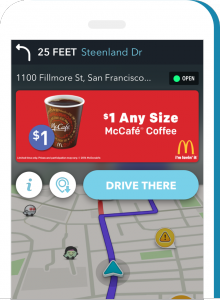Business Intelligence
Using Big Data to Drive Sales

The widespread use of mobile devices and the internet has made the ability to collect data about individuals quite easy. Not only is it easy, but it is a valuable part of business – specifically for marketing purposes. However, if personal and sensitive information about customers is lost, mishandled or sold to third parties, consequences would be unfavorable. For more information about how to collect and handle data, click here. If personal and sensitive information is used correctly and safely, the benefit certainly outweighs the cost. Using Big Data to group consumers into demographic, geographic and psychographic segmentations allows businesses to curate personal advertisements that are most likely to lead individuals to purchase.
Demographic and Transactional Data
Customers are most likely to buy products when deals and promotions are relevant to them. For example, if a department store utilizes a business intelligence software that is able to aggregate demographic information such as age and gender, and combine that with shopping patterns, personalization can occur.
Hypothetically, if a software program captured that a 32-year-old female recently purchased a crib, pacifiers and a baby monitor, an advertisement specifically tailored to the customer informing her of the 20 percent off deal on diapers could be generated and sent to her inbox.
This practice is most successful with online shopping. Online shopping is generally a more planned process with less impulse buying. Consumers are three times more likely to impulse buy in a store rather than online. A study about buying behavior by Infosys revealed that, of people who interact with brands online, 89% say brand interaction has at least some impact on their purchasing habit, and 86% of shoppers said that personalization has at least some impact on what they purchase. Thus, tailoring ads is a significant part of what makes customers buy one product versus a competitor’s.
There are several software solutions on the market for businesses to leverage their Big Data. The Comarch Business Intelligence platform rearranges complex data into lists, diagrams and maps for ease of comprehension. The data maps combine geographic, demographic and location data with those from company reports to enable better decision making. There are also various Customer Relationship Management (CRM) software solutions that aggregate customer data and put it in a central repository to help your business take advantage of it. Salesforce is one of the leaders in CRM software but click here for a detailed look at the top 40 CRM vendors.
Behavioral and Psychographic Data
Lifetime Fitness is a health club that uses SalesForce Marketing Cloud. They use the platform to collect data points about each member to understand his or her preferred workouts, time of day to exercise, and group fitness classes. Email is their largest point of communication to members and 70% of members open emails on their smartphones. Thus, they can create personal email marketing regarding classes, upgrades or news that would be of interest to a triathlete, a busy mom, a bodybuilder, etc. Lifetime Fitness uses CRM for unique messaging across multi-channels (emails, text, notifications) to add value to customer relationships, and thus the brand.
Geographic Data
Location data is another effective way to use information for triggering a purchase. There are roughly two billion smartphone users globally, each equipped with a GPS. Location enabled mobile ads are typically banners that appear when users are physically close to a business. In 2015, 25 percent of Waze (navigation app) advertisers including Dunkin’ Donuts, Outback Steakhouse and Chick-fil-A purchased year long campaigns that enabled takeover ads and branded pins. Waze’s takeover ads are banners advertising the restaurant’s location, and show a button for directions when in range. Branded pins show the restaurant location on the map itself with its logo.
Additionally, companies can analyze traffic patterns by stores over periods of time to see when the most cars pass by, and where the busiest and most popular locations are. As a result, they can be more cost efficient by accurately judging the need for staff or where the optimal place to open a new store would be.
Social Media Data
Big Data collection of online behavior is useful for understanding consumer preferences and opinions, too. Tracking real-time behavior measures how long customers remain on websites, and how they interact with them (likes, shares, comments etc.). DataSift is a platform that extracts large amounts of data from social networking sites and draws valuable insights from it. The data includes shared text, image, audio and video. The platform combines real-time and historical social networking information for business purposes.
Poshly is a company that finds the best beauty products for individuals based on quiz questions and answers as well as data analytics. Poshly collects data about consumer taste and creates content that resonates with the users based on the statistics of what they engage with. They also use this data to interact with users on social media. For example, Poshly was able to detect that the majority of its users were interested in the metallic nail trend. As a result, they posted a photo of metallic nails from fashion week on Instagram.
Why Big Data is Important
Overall, strategically using Big Data to improve communications could be the difference between triggering a customer to make a purchase decision or not. If used properly, the personalization it prompts is both beneficial to business and to consumers.
For more ways to utilize your company’s Big Data, check out our FREE research reports on the best business intelligence software.
[Image courtesy of The Blue Diamond Gallery, CNBC and Waze]








